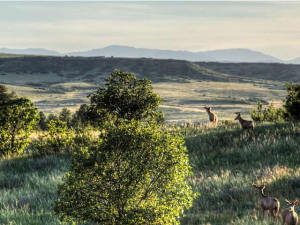How to Finance Buying Land: Should We Go into Debt?
The Small Home, Big Decisions series follows Jennifer and her husband, Tyler, as they build a self-reliant homestead on a piece of country property in northeastern Kansas. The series will delve into questions that arise during their building process and the decisions they make along the way. The posts are a work in progress, written as their home-building adventure unfolds.
 Neither my husband nor I stand to inherit land. Nor have we won the lottery (at least not yet, although we haven’t tried very hard). We are not sitting on piles of money, and no one has dropped off bags of money on our front porch (but if you want to, please feel free.) We did, however, find a piece of land we love, and we did purchase it.
Neither my husband nor I stand to inherit land. Nor have we won the lottery (at least not yet, although we haven’t tried very hard). We are not sitting on piles of money, and no one has dropped off bags of money on our front porch (but if you want to, please feel free.) We did, however, find a piece of land we love, and we did purchase it.
To have enough acreage to achieve our goals within the region we wanted to live in, we knew we would need financing. We got some help from family and we had some savings, but we needed bank financing to make that chunk of Kansas our very own. (We had a period of time where I tried to get Tyler to refer to us as “land baron and baroness,” but the sparkle wore off quickly after I saw how much the land baroness owed each month for the honor of her title.) The choice to take out a mortgage is not an easy one, and it’s not the right decision for everyone. If this is the path you are considering, here are some tips from our experience. (If you want to learn from folks who’ve gone the debt-free route instead, read our Debt-Free Home Reports from real-life readers who’ve made it work without the bank.)
1. Not all banks will do loans for “raw” land. We had to call several banks until we found one that would even lend on undeveloped property. Farm credits or banks in smaller towns in mostly rural counties are a good place to start, as they are more likely to handle these types of investments.
2. Not all banks will lend on large pieces of land. Similar to the point above, you may need to do some searching to find a bank that will lend on more than 10 acres (a common lendable property-size limit we ran into). Sometimes, banks will want you to split the property to make two separate loans, a loan for land and a loan for building a house. It sounds complicated because it is. The reason this can happen is based on rules banks set as to what percentage of the total land value the house can be appraised for. So, in our case, in order to take out a 30-year mortgage on the house we will build, we’re refinancing to have the majority of the land paid back with the original 5-year land loan, and to have the house set up on 10 acres with a separate loan. Which leads us to our next point.
